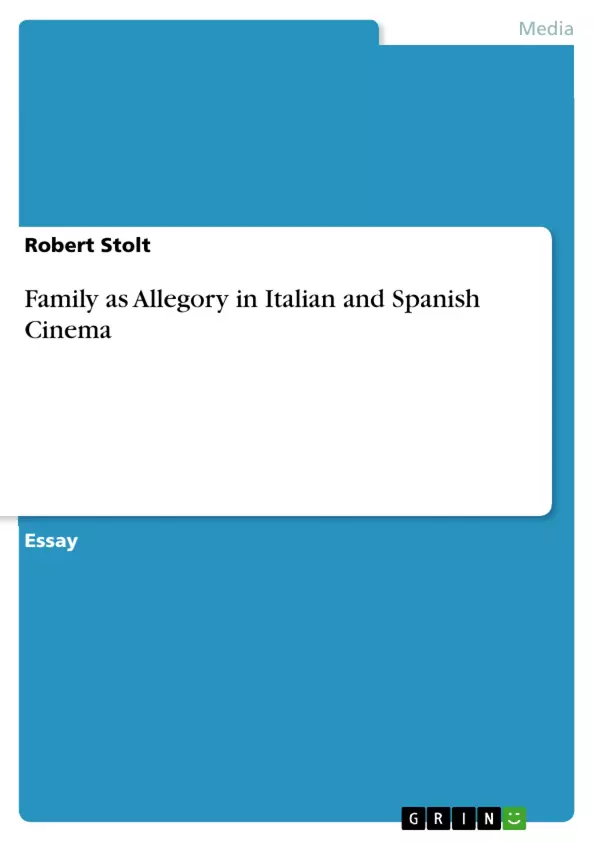The family as an institution that is accountable for raising responsible and mature adults who become representatives of their societies is a key principle of social organisation (Bernardes 1997: 2, Hill 1998: 63). For children, familial life is the very first experience of social relations, through which they become part of a larger community. The intertwining of the levels of human aggregation can be studied ‘as the complex mechanisms around which the history of a nation is constructed’ (Ginsborg 2003: xiii). Thus, analysing the state of the family is an effective vehicle for tracing social and cultural conflicts within a nation. In respect thereof, this essay is aimed to explore the metaphoric effect of the families displayed in Amelio’s Il ladro di Bambini and Saura’s Cría Cuervos.
This essay attempts to analyse how the families displayed in Ladro and Cría can be used to explore the state of the Italian and Spanish nation. Thus, in the second chapter the family shall be looked at as the base of social aggregation in the sense of Aristotle and de Bonald. Moreover, in chapter three the emphasis lies on the different generations in the two films that represent the countries’ cultural, social and political changes. In chapter four, the contrast between old and modern that results from these changes will be looked at in more detail. Furthermore, chapter five will pursue the afore-mentioned issues with the focus on the dysfunctional family as a social and political metaphor. Lastly, chapter six shall conclude the essay with a retrospective analysis.
Inhaltsverzeichnis (Table of Contents)
- Introduction
- An Uncertain Future
- The Change of Values
- Old Versus New
- 1
- 2
- 3
- 4
- Dysfunctional Family as an Allegory to the State
- Conclusion
Zielsetzung und Themenschwerpunkte (Objectives and Key Themes)
This essay aims to explore the metaphorical effect of families displayed in Amelio's Il ladro di Bambini and Saura's Cría Cuervos, analyzing how these families reflect the state of the Italian and Spanish nations.
- The family as a fundamental institution for social aggregation.
- The impact of generational changes on cultural, social, and political landscapes.
- The contrast between traditional and modern values in the context of national identity.
- The dysfunctional family as a metaphorical representation of social and political conflicts.
- The role of cinema in reflecting and critiquing national narratives.
Zusammenfassung der Kapitel (Chapter Summaries)
The first chapter introduces the concept of family as a crucial component of social organization and argues that analyzing family structures can effectively reveal social and cultural conflicts within a nation. It sets the stage for exploring the allegorical representations of families in Il ladro di Bambini and Cría Cuervos.
Chapter two delves into the historical and philosophical understanding of the family as the basis of social aggregation, drawing from the works of Aristotle and de Bonald. The chapter explores how the destruction of the family unit in both films, marked by the loss of a parent, reflects the loss of cultural and national traditions and the uncertain future of the respective nations.
Chapter three examines the different generations presented in the two films and how they represent the countries' cultural, social, and political changes. The focus is on how these changes contribute to the contrast between old and modern values.
Schlüsselwörter (Keywords)
This essay explores the themes of family, national identity, social change, cultural conflict, neorealism, European cinema, Italian cinema, Spanish cinema, Il ladro di Bambini, Cría Cuervos, allegory, metaphor, and the role of cinema in reflecting national narratives.
- Quote paper
- Robert Stolt (Author), 2010, Family as Allegory in Italian and Spanish Cinema, Munich, GRIN Verlag, https://www.grin.com/document/151744



